Trimming Cannabis at an Industrial Scale
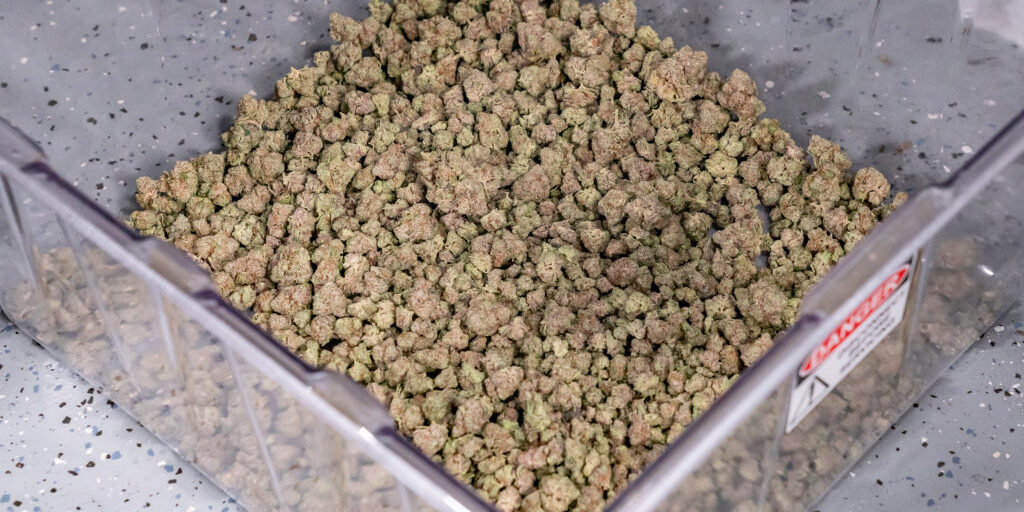
Growing big? Check out this guide to trimming cannabis and hemp at scale — and go beyond the limitations of hand trimming.
When it comes to trimming cannabis, commercial-scale cannabis growers often mismanage the urgent tasks of harvest day and compromise crop quality without even knowing it.
Staffing might not match the workload. Or cannabis trimming systems may struggle to meet the harvest volume. For growers without a solid plan, the consequences are needless stress, undue expenses, and — ultimately — lost revenue.
This quick guide to industrial-scale cannabis trimming gives you a few pointers on how to execute a harvest plan, whether you automate your trimming or not (or choose a wet trim or dry trim).
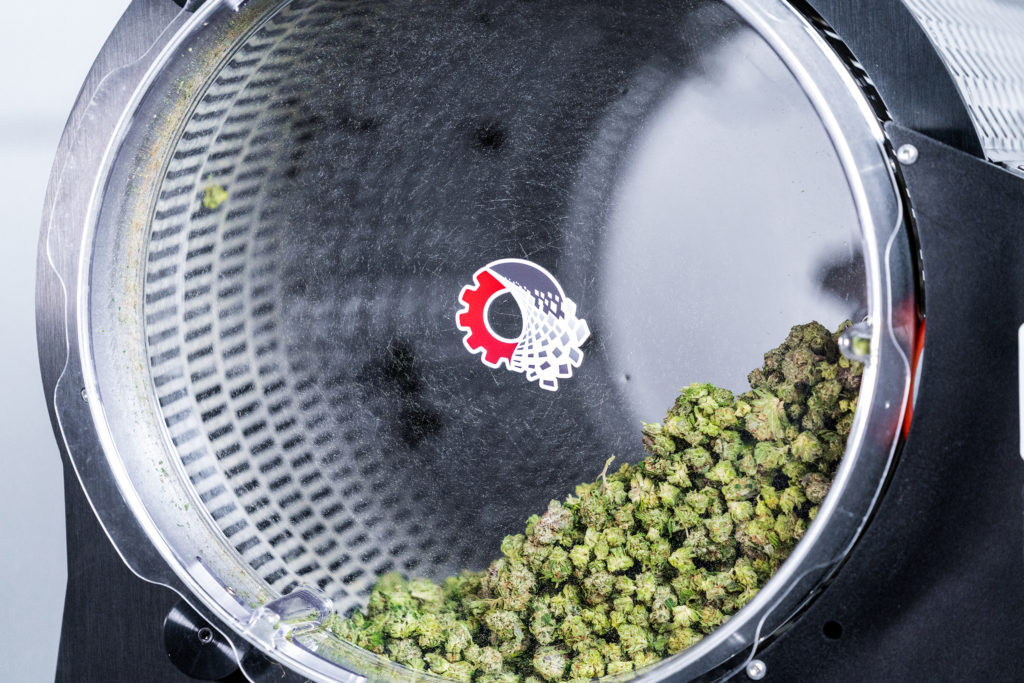
Trimming Cannabis for Harvest Day Success: Two Methods
Even if you’re harvesting metric tons of hemp for CBD extraction, you still need to do an acceptable job of bud trimming. A good trim makes your product more marketable and easier to extract and improves aesthetics, taste, and cannabinoid percentage by weight.
Essentially, there are two ways to trim (and two timeframes for doing the work). The first is the old way — trimming by hand. The second method uses automated cannabis trimming machines.
Regardless of which method you use, you can trim at one of two times: when the cannabis plant is wet (on harvest day) or when it’s dry (after a couple of weeks in the drying area).
How to Hand Trim Cannabis
Most high-volume cannabis growers have turned away from hand trimming, which — as the name suggests — involves manually removing leaves with trimming scissors.
Hand trimming is too labor-intensive to be cost-effective, but it’s worth examining why people may choose to hand trim.
Pros of Hand-Trimming
- Higher quality results (compared to first-generation trimming machines)
- Few upfront expenses and low capital investment
- Hand trimming is culturally ingrained for growers
Cons of Hand Trimming
- Massive labor costs and lower profit margins
- More employees and increased risk of employee theft
- Increased risk of crop contamination from overhandling (mold, mildew, human hair)
- The headache of managing 20-50 extra people during the busiest, most-stressful period of the crop cycle.
Most cultivators who trim by hand do so when the plants are dry — after hanging them in a drying area for a week or two. This makes the leaves easier to remove by hand.
The ideal drying space is protected from dust and pests and climate-controlled around 50-55% humidity and 60-70°F. However, growers who lack indoor space sometimes hang their plants against a chain-link fence as a simple solution.
Expert Tip
Plants can be hung whole (upside down). Or, to speed the drying process, you can separate them into stalks before hanging them. This practice speeds drying in humid climates but may compromise delicate cannabinoids and terpenes if humidity is low.
A human trimmer can process 1-3 pounds of dried product per 8-hour shift. Some cultivators pay their trimmers based on how much they trimmed. Expect to pay $100-200 per eight-hour shift depending on the time of year and market. Other cultivators pay their trim crews hourly at rates between $15-20.
If you hand trim, budget accordingly, and start your hiring process early. Large outdoor farms need a swarm of seasonal workers to get the job done. While the equipment is minimal — scissors, trim bins, gloves — the labor expenditure and HR coordination are significant.
A Better Option: Cannabis Bud Trimmers
As you might expect, we here at Triminator are fans of automated trimming. After all, we’ve made some of the finest trimmers in the cannabis industry since 2011.
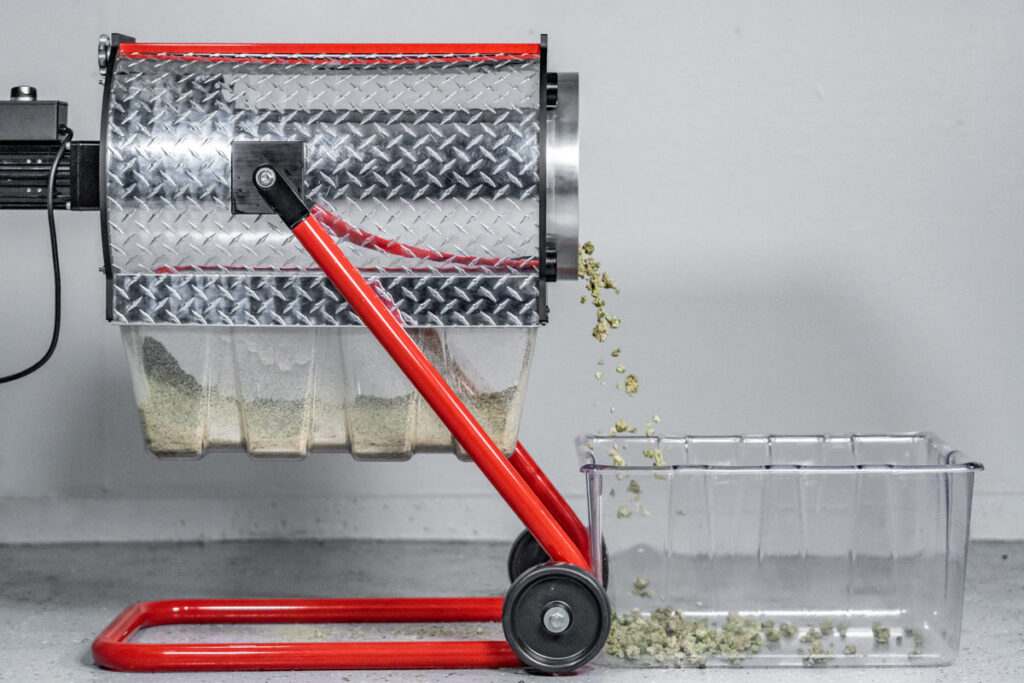
Trimming cannabis with a bud trimmer is now the standard industry practice because it creates immediate, dramatic labor savings that benefit growers crop after crop.
What’s more, modern trimmers preserve the quality and potency of the crop, avoiding the rough trim associated with earlier models.
Pros of Machine Trimming
- Reduced labor costs
- More predictable scheduling than hand trimming
- Smaller staff to manage
- Consistent quality
- Large operations can utilize multiple trimmers
Cons of Machine Trimming
- Upfront investment
Adding a mechanical cannabis trimmer to the mix revolutionizes your post-harvest workflow. Fewer staff members are necessary, and they perform different tasks than when trimming manually. Moreover, your harvest can be processed in a fraction of the time it would have taken when trimming by hand.
Wet vs. Dry Trimming
Cultivators who switch to mechanical trimming often choose to wet trim. With wet trimmed cannabis, the flowers are separated from the stalks and are trimmed before they’re dried on racks.
Wet trimming advantages
- Streamlined process
- All the work can be done on harvest day
- Labor is easier to manage
- No need to wait until the flowers are perfectly dry to schedule the trimming day
Wet bud trimming is the likely choice in humid climates, where mold threatens newly harvested flower. The wet trimming process is fast and straightforward, and, with proper climate control, drying after trimming can yield a good-quality product.
Dry trimming advantages
- Postpones trimming work from harvest day to later date
- Slower, whole-plant drying process preserves terpenes and cannabinoids so the crop is more potent and valuable
Dry cannabis trimming is sometimes the only option for massive, multi-acre farms with limited labor availability. With so much to harvest, it’s easiest to hang the plants and attend to the rest of the processing later.
The core advantage of dry trimming — which makes it the long-held standard for quality — is the slow rate of drying.
Unlike most trimmers, the Triminator Hybrid accommodates both wet and dry plant material, allowing you to switch up your method. Better still, the Hybrid’s adjustable settings allow you total control over how you trim.
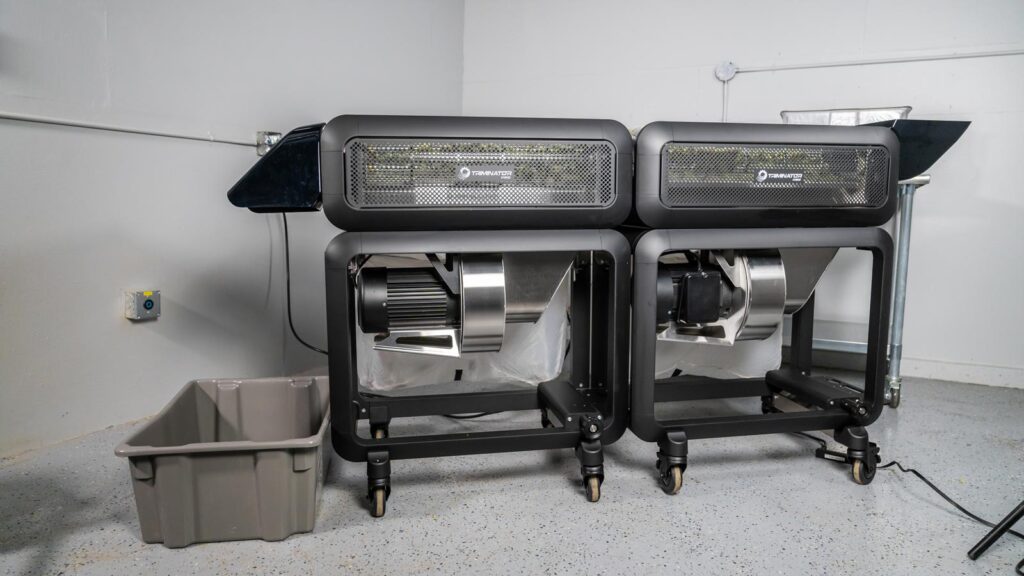
Mechanical Cannabis Buckers
A cannabis bucker separates the flowers from the stalk — and massively expedites industrial-scale processing.
Instead of stripping off (bucking) the buds by hand, technicians feed cut stalks into a machine that pulls the stalk through a tight hole, bucking the buds into a bin below.
If you’re harvesting cannabis at scale, make sure to check out the Triminator BuckMaster Pro. And when you’re ready to dispose of those stalks, try the Triminator ShredMaster HD. It chips stems, root balls, and even plastic containers down to 5/16” pieces for easy disposal.
Types of Cannabis and Hemp Trimmers
You’ll find several styles of bud trimmers on the market, but the most common is the throughput trimmer.
Throughput Cannabis Trimmers
With a throughput trimmer, like the Triminator Hybrid™, the flowers pass through a bladed tumbler and emerge trimmed on the other side. The process is fast and lends itself to assembly-line-style workflows.
Expert Tip
Some cultivators use their throughput trimmers to take off the large outer fan leaves by sending intact stalks through the trimmer. Then, they hang dry the stalks and dry trim later. Removing the outer leaves slows drying and reduces drying-room humidity. Using the trimmer to defoliate saves time.
Add-on equipment can further increase the benefits of a throughput trimmer. Infeed conveyors can make loading the machine easier and increase trim quality. That’s because they smooth the flow of flowers into the machine, which means results are more consistent.
Outfeed conveyors replace the collection bins common to most throughput conveyors. They enable better quality control because employees can easily perform touch-up trimming as the flowers pass on the outfeed conveyor.
Batch Bud Trimmers
Instead of a continuous feed, batch trimmers operate one batch at a time. Technicians load the machine and run it for a specific amount of time until the desired trim is achieved.
Batch trimmers, such as the Triminator XL Dry, allow technicians to perform other tasks as the machine runs. Only one employee is necessary to operate the machine, and the workflow is simpler than that of a throughput trimmer — just load and unload.
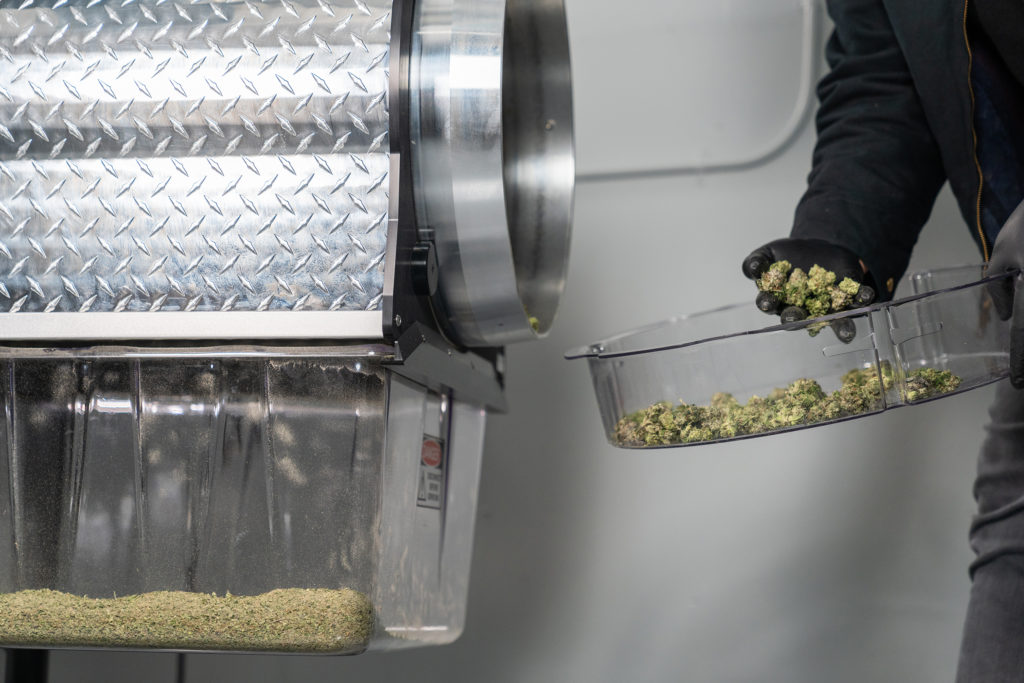
What to Look for in a Cannabis & Hemp Trimming Machine
Gentle Handling
Some trimmers are rough on flowers. They fail to cut effectively and force operators to run the machine longer, exposing the product to undue tumbling.
Instead, look for machines with more effective cutting systems that provide variable speed control to ensure gentle handling. This is especially important for dry flowers.
High Speed
The processing rate of trimmers varies widely. Most commercial cannabis trimmers process at rates between 20-40 pounds per hour. Yet some industrial hemp machines, like the Triminator XL Dry, process as much as 60 pounds per hour.
Make sure your new machine trimmer meets your processing needs, and know that calculating the speed of your machine may not be as simple as it seems because of hidden maintenance tasks that slow you down.
Minimal Maintenance
Some cannabis trimmers operate at high instantaneous processing rates yet suffer from frequent, lengthy cleaning tasks. In fact, you may spend nearly as much time cleaning your trimmer as you do running it.
Because cannabis flower is a resinous product, that’s only natural — and it’s why you should select an easy-to-service trimmer that prevents resin build-up. Make sure your trimmer is pressure-washable, too.
Want to see the trimmer-cleaning process — step-by-step? Check out this 3-minute cleaning tutorial video for the Triminator XL Dry.
Customer Service
You need a reliable trimmer and a strong team to stand behind it. So make sure your trimmer is backed by the best and warrantied for the rigors of field use. Triminator provides industry-leading support and a one-year warranty on all trimmers purchased through authorized retailers.
Discover the Best Bud Trimmer for You
Check out Triminator’s extensive line of cannabis and hemp trimmers, and feel free to reach out with questions or a request for a demonstration.
Like what you read?
Get more insider industry knowledge sent right to your inbox
"*" indicates required fields